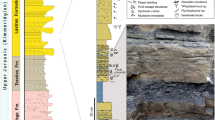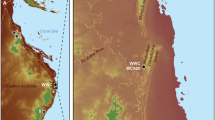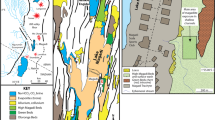Abstract
ON reading Mr. C. Carus-Wilson's note (NATURE, March 3, p. 292) referring to the long tubular holes seen in sarsen stones, which he says suggest “the work of marine annelids, anterior to the consolidation of the rock,” it struck me that some important light may be thrown on this subject by observations made on this side of the globe. First of all one might suggest that if these were annelid burrows they would have an average diameter, and there seems to be no evidence that the greywether sandstone, with its once softer siliceous matrix, was of marine origin. In Australia we have a great extent of country along the coast and inland, covered with dune formation, and these deposits enclose enormous quantities of vegetation. Plants that are growing on or near these dune areas, sometimes under swampy conditions, are covered over with sand, which is being blown about the stems of such grasses, reeds, and shrubs so as to completely enclose them. When the dune rock, some of which dates back to the early Pleistocene, has consolidated, a fracture reveals tubular holes which might suggest worms, but from their positions, at all angles, as well as vertical, and from their varied diameter and outline, are easily traced back to plant origin.
This is a preview of subscription content, access via your institution
Access options
Subscribe to this journal
Receive 51 print issues and online access
$199.00 per year
only $3.90 per issue
Buy this article
- Purchase on Springer Link
- Instant access to full article PDF
Prices may be subject to local taxes which are calculated during checkout
Similar content being viewed by others
Author information
Authors and Affiliations
Rights and permissions
About this article
Cite this article
CHAPMAN, F. Probable Aeolian Origin of Greywether Sandstone. Nature 112, 239–240 (1923). https://doi.org/10.1038/112239c0
Issue Date:
DOI: https://doi.org/10.1038/112239c0
Comments
By submitting a comment you agree to abide by our Terms and Community Guidelines. If you find something abusive or that does not comply with our terms or guidelines please flag it as inappropriate.



